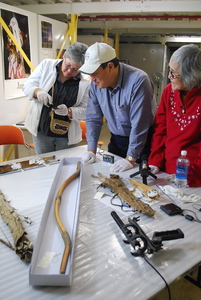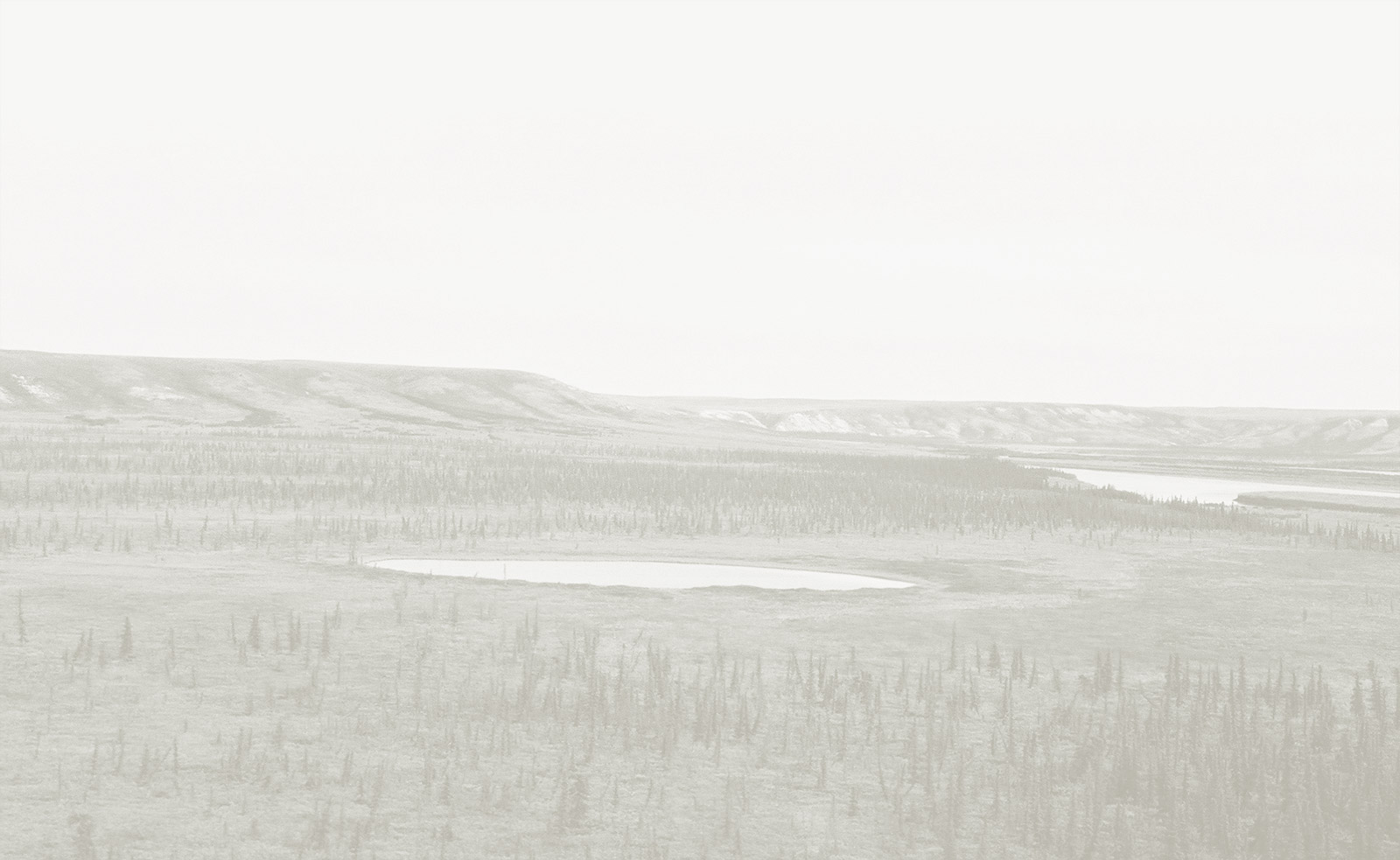 We are building a new Inuvialuit Living History website to showcase Inuvialuit culture and history from across Inuvialuit Nunangat. We want to feature as many Inuvialuit as possible on the site. If you are a beneficiary, we hope you’ll submit one or both of the items below. Help us highlight the diverse people and cultural activities that make Inuvialuit culture so vibrant!
There are two submission formats: profiles and videos.
We are building a new Inuvialuit Living History website to showcase Inuvialuit culture and history from across Inuvialuit Nunangat. We want to feature as many Inuvialuit as possible on the site. If you are a beneficiary, we hope you’ll submit one or both of the items below. Help us highlight the diverse people and cultural activities that make Inuvialuit culture so vibrant!
There are two submission formats: profiles and videos.
Profiles
To submit a profile complete the form here: https://forms.gle/8US1oFHksFVuYYvX6 and email your photo to: inuvialuitlivinghistoryproject@gmail.com
Videos
Submit a short video (under 3 minutes) of you or a family member or friend answering one or more of the following questions:
When do you feel most connected to your culture?
How do you learn about your culture?
What Inuvialuit activities do you enjoy? How do they make you feel?
What does an Inuvialuit future look like?
Check out Brianna Wolki’s amazing video for inspiration! https://youtu.be/p39FhVSNHiU
Send your video to inuvialuitlivinghistoryproject@gmail.com. TIP* You can use Wetransfer to send large video files. Or upload your file to YouTube and send us the link.
Your submissions could be featured on the new website!

We’re back!
It’s been six years since we launched this website to share the MacFarlane collection with Inuvialuit and the world. Now we want to expand the site to include objects from archaeological sites across the Inuvialuit Settlement Region.
Read More
MEDIA ADVISORY
The Inuvialuit Cultural Resource Centre (ICRC) in Inuvik, N.W.T., is proud to announce the launch of a new website, Inuvialuit Pitqusiit Inuuniarutait: Inuvialuit Living History – www.inuvialuitlivinghistory.ca. Produced in collaboration with the Smithsonian Institution's Arctic Studies Center, the Department of Canadian Heritage's Museums Assistance Program, Parks Canada’s Western Arctic Field Unit, and other project partners (see full list below), the website provides on-line access to an important but little-known collection of over 300 cultural objects and nearly 5,000 natural history specimens at the Smithsonian Institution which were collected by Hudson’s Bay trader Roderick MacFarlane from Inuvialuit living in the Anderson River area in the 1860s. It also provides lesson plans for elementary and high school students that highlight Inuvialuit traditional knowledge and the history of the Anderson River region as pathways for learning about items in the collection. Read More
 The Inuvialuit Living History project team is pleased to have made our site accessible to the public. In advance of the official launch of the project at the end of April 2012, we welcome your feedback, comments, and suggestions for improving the website. Read More
The Inuvialuit Living History project team is pleased to have made our site accessible to the public. In advance of the official launch of the project at the end of April 2012, we welcome your feedback, comments, and suggestions for improving the website. Read More
 In January, 2012, Kate Hennessy represented the project team in a workshop called "After the Return" at the American Museum of Natural History in Washington D.C. Mervin Joe was also scheduled to attend but was unfortunately kept at home by the famous Inuvik blizzard that damaged the roof of the Inuvik airport! Luckily Mervin was able to Skype into the workshop to talk about his outreach work in the Inuvialuit Settlement Region and his work on the Inuvialuit Living History website. Kim Christen, a co-organizer of the workshop, wrote a great summary on the blog "Material World" about the workshop In addition to describing many of the fantastic presentations given in the course of the event, she talks about Mervin's virtual presentation. All in all it was a wonderful few days and we arereally looking forward to future collaborations and publications. Read More
In January, 2012, Kate Hennessy represented the project team in a workshop called "After the Return" at the American Museum of Natural History in Washington D.C. Mervin Joe was also scheduled to attend but was unfortunately kept at home by the famous Inuvik blizzard that damaged the roof of the Inuvik airport! Luckily Mervin was able to Skype into the workshop to talk about his outreach work in the Inuvialuit Settlement Region and his work on the Inuvialuit Living History website. Kim Christen, a co-organizer of the workshop, wrote a great summary on the blog "Material World" about the workshop In addition to describing many of the fantastic presentations given in the course of the event, she talks about Mervin's virtual presentation. All in all it was a wonderful few days and we arereally looking forward to future collaborations and publications. Read More
 This article was just published in the Slave Lake Journal, reporting on Mervin and Chuck's presentation about the Inuvialuit Living History Project in Fort Smith, NWT.
This article was just published in the Slave Lake Journal, reporting on Mervin and Chuck's presentation about the Inuvialuit Living History Project in Fort Smith, NWT.
Inuvialuit trace their culture south to the Smithsonian
By MEAGAN WOHLBERG, SRJ Reporter
Tue, Nov 15, 2011
In the mid-1860s, Hudson's Bay Company trader Roderick MacFarlane sent
thousands of cultural and scientific artifacts from the Fort Anderson
trading post on Inuvialuit territory down to the Smithsonian Museum in
Washington, DC. Read More
 Tusaayaksaat is a magazine published by the Inuvialuit Communications Society. This great article written by our project team member Maia Lepage tells the story of how Inuvialuit artifacts were collected by Roderick MacFarlane and brought to the Smithsonian Institution's National Museum of Natural History, and how in 2009 an Inuvialuit delegation traveled to Washington D.C. to see them for the first time. Beautiful photographs are by Maia Lepage and Dave Stewart.
Read More
Tusaayaksaat is a magazine published by the Inuvialuit Communications Society. This great article written by our project team member Maia Lepage tells the story of how Inuvialuit artifacts were collected by Roderick MacFarlane and brought to the Smithsonian Institution's National Museum of Natural History, and how in 2009 an Inuvialuit delegation traveled to Washington D.C. to see them for the first time. Beautiful photographs are by Maia Lepage and Dave Stewart.
Read More
 Our team is excited to have migrated our website to its new website address at www.inuvilauitlivinghistory.ca. This is still a work in progress, and we are continuing to upload content and work out some design details. We greatly value your feedback and invite you to let us know what you think of the project by following the "Contact" link at the bottom of the page. We anticipate that the project will be officially launched early in Fall, 2011. Read More
Our team is excited to have migrated our website to its new website address at www.inuvilauitlivinghistory.ca. This is still a work in progress, and we are continuing to upload content and work out some design details. We greatly value your feedback and invite you to let us know what you think of the project by following the "Contact" link at the bottom of the page. We anticipate that the project will be officially launched early in Fall, 2011. Read More
 We are building a new Inuvialuit Living History website to showcase Inuvialuit culture and history from across Inuvialuit Nunangat. We want to feature as many Inuvialuit as possible on the site. If you are a beneficiary, we hope you’ll submit one or both of the items below. Help us highlight the diverse people and cultural activities that make Inuvialuit culture so vibrant!
There are two submission formats: profiles and videos.
We are building a new Inuvialuit Living History website to showcase Inuvialuit culture and history from across Inuvialuit Nunangat. We want to feature as many Inuvialuit as possible on the site. If you are a beneficiary, we hope you’ll submit one or both of the items below. Help us highlight the diverse people and cultural activities that make Inuvialuit culture so vibrant!
There are two submission formats: profiles and videos.









